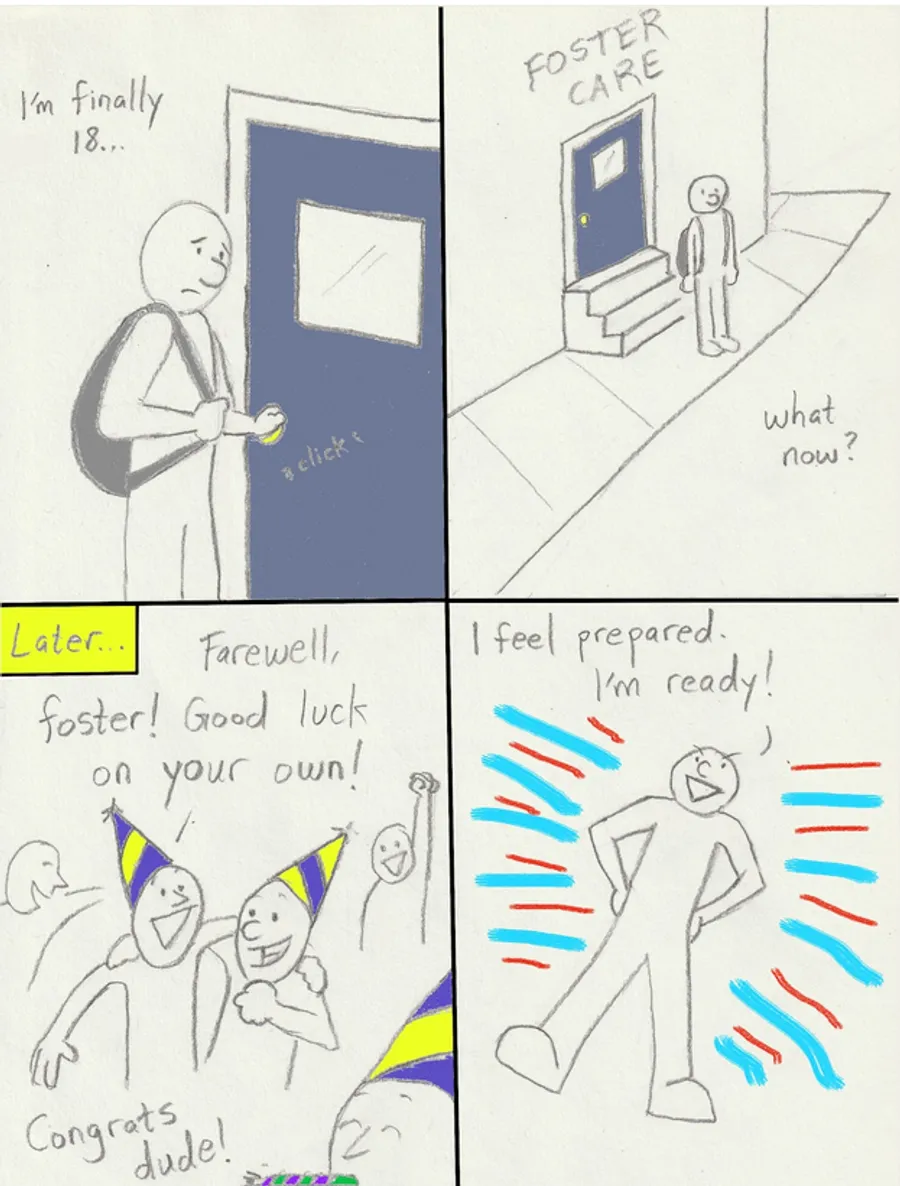
Fostering Independence
Policy Team Contributors: Joe, Ky
Author: IHaveEatenFoliage
Copy Editor: Compre
DGG Political Action’s Policy Team acts as a collaborative think tank, developing and exploring potential policy ideas on issues that matter to our community. Our working group synthesizes input from community members to spark conversation and serve as a springboard for future projects. While we aim to contribute to thoughtful dialogue, the ideas we share do not necessarily represent official positions of DGG Political Action.
Background
When children are placed in foster care, it is typically because either:
- No capable guardian can be found for a child, either because of the disability/death of their guardian or because a child has extraordinary needs that a guardian is not in a position to handle. Or
- The guardian of a child has been found to be providing an unacceptable environment for a child, whether from neglect, abuse, or exposure to unacceptable dangers.
In the first case, it is in all of our interest that the foster system leads to a successful life, as a form of social insurance. If you are a parent, leaving behind a child without a parent is more tragic than your own passing. If the unimaginable happens, your child will be left in the hands of the foster care system.
In the second case, the decision to take the step of separating a child from their family is one side of a social contract by society that the decision will be in the interest of the welfare of that child.
After foster care ends, ex fosters begin taking very different paths, and the policy prescription explodes in complexity. Some foster children will leave foster care ready to enter adulthood and may benefit from some guidance and support against the expected turbulence of life. Others may require significant assistance to transition to adulthood successfully. Finally, some leaving foster care have profound long term issues that will require continuous support.
Our efforts have not been enough, with many ex-fosters experiencing homelessness in their transition to adulthood.
Increased Funding
Support for young adults after leaving foster care is a patchwork of policy across the 50 states. In 1999, Congress passed the Foster Care Independence Act which appropriates grants to states. State usage of appropriated funds differ significantly, through a patchwork of unique state programs to support ex-fosters, including support for housing and education. In addition, many states spend much more in state funds than they receive from the federal program, but there are no states that are adequately funded for the mission of providing basic support for all ex-fosters.
The system is not just underfunded in some communities in the US, it's underfunded everywhere in the country. While the population of those leaving foster care has grown over the years, funding of the system has not met demand. Even in states using significant state funds that exceed the amount they receive from the Chafee program, their programs are still underfunded.
To better support ex-fosters, the Chafee Program needs a doubling of funding from 143 million dollars to around 280 million dollars, along with a set of reforms to set the stage for a system that better prioritizes the needs of ex-fosters and results in the data collection needed to support further policy improvements. In a struggling system, maintained across 50 incompatible state administrative systems, gathering data is a huge challenge. Because data collection is inconsistent and of low quality, determining the correct funding level is challenging currently, but based upon the funding across various states, a doubling of funding is a lower bound on the needed funding.
Expanded Eligibility and a 2 Year Transition Period
Currently, to use Chafee Program funds, a state must apply for a recipient qualifying under Title IV-E which generally applies to federal funding of foster care itself. By being placed in foster care until leaving as an adult, the government has taken on the obligation to provide assistance to transition to adulthood. Given the low levels of funding that will be available even after a doubling of federal funding levels, caseworkers can be relied upon to deploy resources where it is most desperately needed instead of placing administrative hurdles to deploy federal funding.
Enabled by a reduced administrative burden of deploying program funds, a 2 year transition period must be universalized. Adults leaving foster care should retain a caseworker that will assist in gaining access to essential documents, finding their first employment, attaining independent housing, or pursuing educational opportunities. Data collection for this period must be federally standardized and required to aid policymaking during this most volatile period where the most ex-fosters are needing assistance.
Federal Ex-Foster Mobile App
What happens after an ex-foster stops receiving assistance and does not have an assigned caseworker? Ex-fosters may be unaware of services available if they are in need, and without visibility, Chafee programs are not in a position to help. In addition, in evaluating the efficacy of assistance for ex-fosters, this research is impaired by only collecting information from fosters receiving assistance. Without data from ex-fosters not receiving assistance, we cannot evaluate the impact providing assistance ultimately has.
The creation of a Chafee app that will pay ex-fosters for completing a survey periodically would both provide the visibility into the ex-foster population for improving policy, and would also connect ex-fosters to support in case they are in need, much more likely to seek help through the Chafee Program after they lose an active caseworker.